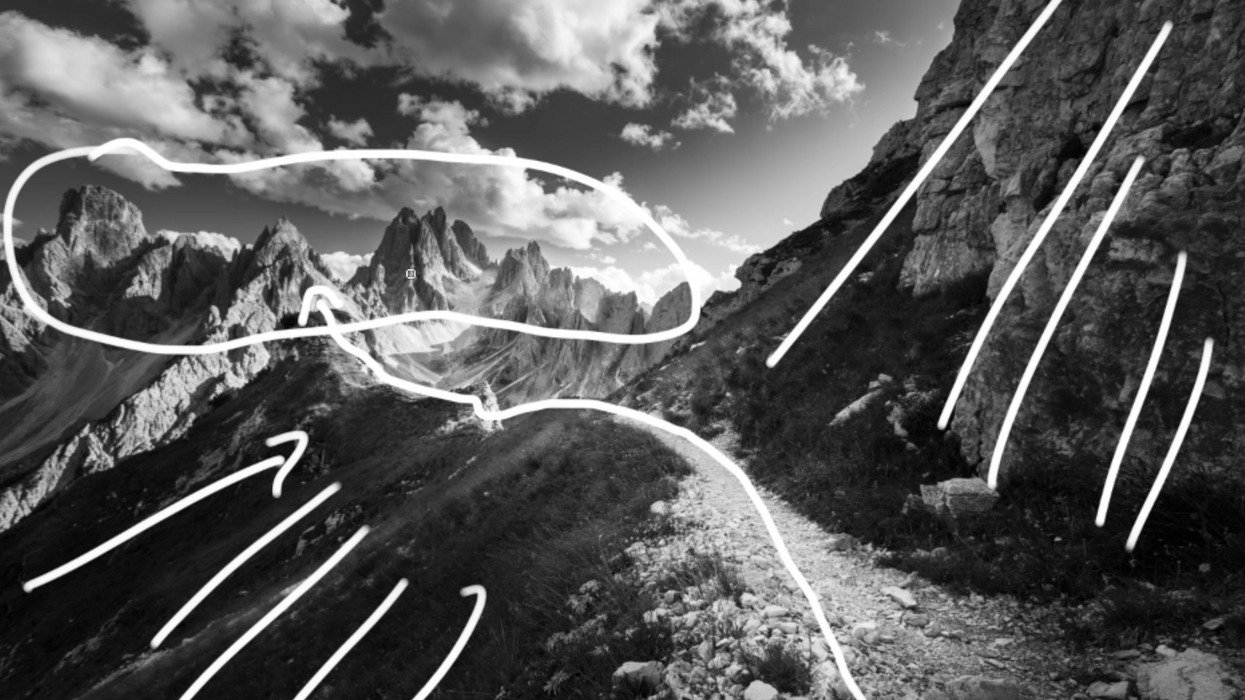Watch: 9 Ways to Compose a Shot Like a Pro
Understanding the science behind the art of composition is the first step in composing like one of the greats.

Composing a shot can be a tremendously difficult thing to do. Sure, there are helpful tricks and guides that make the process a little easier, like, for example, using the Rule of Thirds, but in order to really craft an image from scratch or capture the elements around you that form a good composition, you have to be able to understand the structures of aesthetics.
In this video, photographer Toma Bonciu explains how to recognize certain compositional fundamentals, including leading lines, framing, color, lateral movement, and negative space so you can apply them in your own work.
There's no "right" way to compose an image, however aesthetic theory tells us that there are certain mathematical and psychological factors at play when viewing images that contain different compositional elements. For example, if you view an image with a white background and a big black dot in the middle, aesthetic theory says that your eye will be drawn to the big black dot because of its size, shape, and placement within the frame. Or, if you view an image of two identical houses side by side at nighttime, one with the lights on and the other with the lights off, your eye will be drawn to the house with the lights on, because the color and brightness of that light stands out among the darkness of the image.
There are so many factors that play a role in aesthetics, but Bonciu touches on nine of them to help you get an idea of how to draw attention to desired elements within your frame:
- Fill the frame: Your frame can only hold so many elements and each of those elements are competing for your viewers' attention. One way of making your desired element stand out is by filling the frame with that element. This works because size is one of the most useful tools in your aesthetic arsenal. The bigger the size of the element, the more attention it will most likely get. (This isn't always the case, especially if there are contrasting colors, sizes, placements, etc.)
- Centered: If you place your element front and center, it's difficult for your viewer to miss it. (Just ask Wes Anderson.) Of course, we learn that placing your subject along the lines and intersections described in the Rule of Thirds is one of the best ways to draw attention to it, and there aren't any that run through or meet in the center of the frame. However, there are many different compositional techniques other than the Rule of Thirds, like "quadrant framing" and the "golden ratio," so clearly you can explore other options and get creative.
- Color spot: Color is another powerful element that can make your subject jump from the frame. One of the best and easiest ways to do this is by choosing a bright color that is complementary to the color of the background, like capturing a red element in a lush, green forest, or a yellow element against a purple sunset.
- Negative space: Negative space is simply the stuff that is not your subject, so everything around and in-between it. You can use negative space in many ways: to highlight your subject by capturing a lot of negative space in your composition, adding tension by adding an element to the negative space later in a shot, or having the negative space mimic your subject, like the shirt/wallpaper gag in Garden State.

- Leading lines: Because our eyes naturally want to follow along lines within a frame, a good way to guide your viewers' eye to your subject is by capturing leading lines that converge toward your subject. You may have never heard of the term "leading line" before, but you've definitely seen them. Some examples are horizon lines, roads, paths, power lines, tree trunks, tops/sides/bottoms of buildings, and even contrails.
- Left to right: In the same way that we read text from left to right (not all writing systems are LTR; some, like Arabic and Hebrew, are RTL), so too we "read" images from left to right. So, one way to bring more attention to your subject is by placing it on the right side of your composition, with leading lines that guide your viewers' eye from the left side of the frame to the right side. If you want to explore this concept further, you should learn about "lateral movement" and how it affects your viewers' perception of a scene.
- Depth: Since we work in a two-dimensional medium, we're always looking for ways to add depth to our scenes. You can do this by adding elements to the foreground and background, shooting with a shallow depth-of-field, creating a parallax effect, using high-contrast lighting, and capturing your image from interesting perspectives.
- Viewpoint: Speaking of perspective, another way to make your images pop is by capturing a scene from a point-of-view that isn't often seen. Since we traditionally see the world straight-on from eye level, angling your camera to capture aerial shots, high/low angles, birds-eye-view and worms-eye-views, or tilting your camera to capture a canted or Dutch angle will immediately draw attention to your composition.
- Zig-Zag: This technique is interesting, because it's basically just leading lines with "breakpoints," as Bonciu describes them. The leading lines almost act as several flights of stairs that eventually lead up to your subject; one line leads up to another line, which goes the opposite way toward another line, which again leads the opposite way toward your subject.
What are some other useful compositional techniques that can help draw attention to your subject? Let us know down in the comments.
Source: Photo Tom











